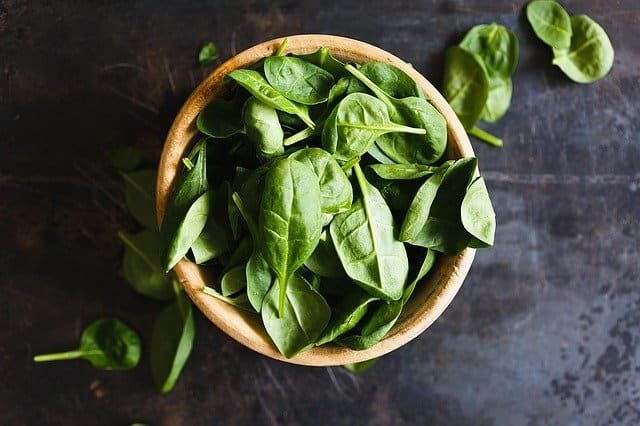Microgreens are known to be the easiest fresh produce to grow that can be eaten raw. They are the first true leaves produced from a seedling, which is older than a sprout but much younger than a full-grown plant. They are often under 14 days to harvest and approximately have 1–3 inches tall or 2.5–7.5 cm.
Since 1996, they have been gaining popularity because of the high nutritional benefits and their diverse sensorial characteristics. They are primarily used in the restaurant industry because of the perfect look they add in a plate and can play a role in both savoury and sweet dishes
Can I grow microgreens in my area/climate?
Unlike crops that can be grown depending on climate, microgreens can be grown almost anywhere even inside your house. They only take a limited amount of space and are suitable for almost all climates.
The most common plants used for growing microgreens are:
| Lettuce | Kale | Spinach | Radish |
| Beet | Watercress | Herbs | Greens |
| Cabbage | Mustard | Chia | Sunflower |
| Buckwheat |
Top 10 Small Microgreen Seeds and their flavor
| Purslane Flavor: Tangy & citrusy spinach | Oregano Flavor: Pungent and intense |
| Sage Flavor: Mild and earthy | Tarragon Flavor: sweet, mildly licorice-like |
| Thyme Flavor: earthy, herbaceous taste | Alfalfa Flavor: Mild and sweet |
| Amaranth Flavor: Beet-like | Lemon Balm Flavor: Bright, citrus/lemon tangy |
| Marjoram Flavor: strong, oregano-like | Mint Flavor: Sweet and minty taste |
Top 10 Medium Microgreen Seeds and their flavor
| Arugula Flavor: Spicy, peppery and sharp | Basil Flavor: Light, mild basil flavor |
| Broccoli Flavor: Mild, crunchy texture | Red or Green cabbage Flavor: Mild cabbage |
| Cauliflower Flavor: Slightly peppery, mild taste | Lettuce Flavor: Mild, rich, sweet taste |
| Sesame Flavor: Mild, sweet flavor | Radish Flavor: Spicy, delicate peppery |
| Mustard Flavor: Peppery, delicately spicy | Chives Flavor: Mildly garlicky, spicy |
Top 10 Large Microgreen Seeds and their flavor
| Parsley Flavor: Refreshing and light taste | Fennel Flavor: Sweet and liquorice-like |
| Lentils Flavor: slightly bitter and subtle pea | Sunflower Flavor: Sweet and nutty |
| Wheatgrass Flavor: complex, bittersweet taste | Kohlrabi Flavor: Mild, sweet subtle taste |
| Adzuki Flavor: Sweet and nutty flavor | Barley Flavor: Earthy and mildly flavor |
| Kale Flavor: Sweet and broccoli-like | Mung Beans Flavor: Rich Sweet Bean |
Top Reasons Why You Should Grow Your Own Microgreens At Home:
- Easy to grow in a limited amount of space
- Minimal cost, time and effort for a continuous supply of fresh nutrient greens
- Perfect solution for urban living
- Ready to harvest in just 2 weeks
- Packed with variety of flavors & a lot of nutrients
- No packaging wasted
- No climate restrictions – can be grown inside the house
- Perfect introduction to gardening for beginners
- Healthy, living food to supplement a healthy diet
Supplies Needed To Grow Microgreens At Home
- Growing containers or trays
- Certified organic/fungicide free seeds
- Drinking water or spray bottle
- Seaweed solution
- Seed raising mix growing medium
- Paper towel or chux cloth to line tray
- Plant label or use pen for marking date and variety
- Scissor
Step by Step in Growing Microgreens At Home
STEP 1. Choose and Secure Location
Find the perfect place to grow your microgreens. You need to be sure that the surface is protected from overspray, misting or overflow from drain holes.
STEP 2. Preparing Your Container and seed raising mix
If you’re using a tray, be sure to disinfect it first and keep it dry. Using your tray, you need to lay chux cloth or moistened paper towel on the bottom to avoid the mix falling through. Fill your container for about 3/4 full of moist growing medium, which is 2-3 cm or 1 in deep.
STEP 4. Sowing your seeds
Sprinkle seeds over the mix and lightly press it. For small seeds, evenly spread a thin layer of seed raising mix or sieved compost for about 0.5 cm or 1/5 in over the top so they will all be covered.
IMPORTANT NOTE:
- Place your container on a warm spot like your kitchen bench
- Always check soil moisture by touching it using your fingers. Water them as needed.
- To help prevent dislodging the seeds, use a spray bottle to lightly water them.
- Avoid over-watering or avoid them to dry out
- For seeds to germinate, create a warm humid environment by covering the seeds with a clear plastic bag over the top and for air flow put holes snipped in the top.
STEP 5: Harvesting Your Microgreens
Once germinated, the seeds have already used their internal store of food to be able to grow. To feed your plants with trace elements to boost their nutrition and improve flavors, apply the seaweed solution.
When your seedlings already reach 2-5 cm or 1-3 in tall, your microgreens are now ready to be harvested. To easily cut the stems above the soil, use scissors. Now, you can enjoy your very own microgreens at home!

